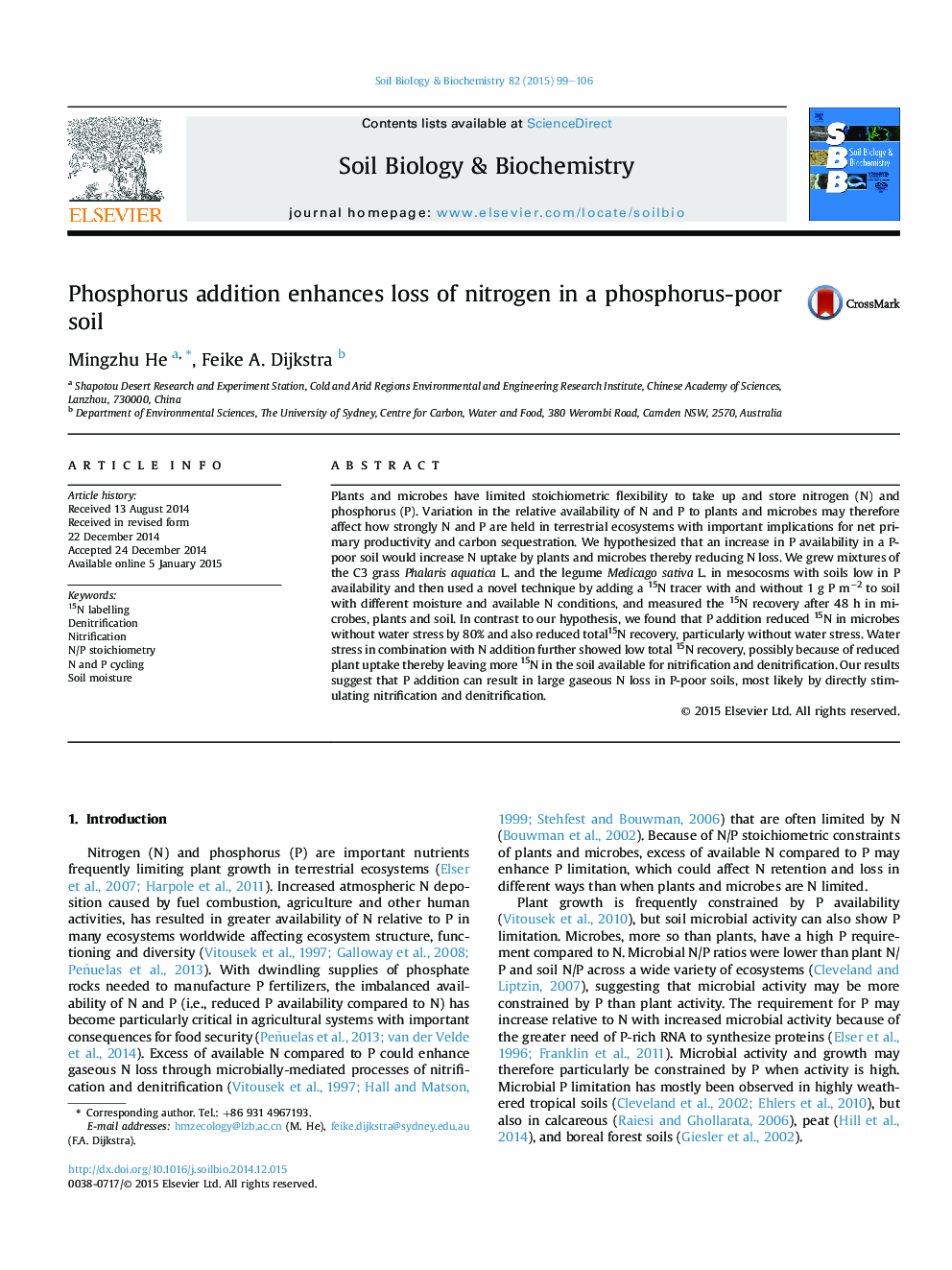| Article ID | Journal | Published Year | Pages | File Type |
|---|---|---|---|---|
| 2024486 | Soil Biology and Biochemistry | 2015 | 8 Pages |
•A 15N tracer with and without P was added to a P-poor soil.•P addition reduced recovery of 15N in microbes and soil.•The C3 grass recovered more 15N than the legume.•P addition can result in large N loss in P-poor soil.
Plants and microbes have limited stoichiometric flexibility to take up and store nitrogen (N) and phosphorus (P). Variation in the relative availability of N and P to plants and microbes may therefore affect how strongly N and P are held in terrestrial ecosystems with important implications for net primary productivity and carbon sequestration. We hypothesized that an increase in P availability in a P-poor soil would increase N uptake by plants and microbes thereby reducing N loss. We grew mixtures of the C3 grass Phalaris aquatica L. and the legume Medicago sativa L. in mesocosms with soils low in P availability and then used a novel technique by adding a 15N tracer with and without 1 g P m−2 to soil with different moisture and available N conditions, and measured the 15N recovery after 48 h in microbes, plants and soil. In contrast to our hypothesis, we found that P addition reduced 15N in microbes without water stress by 80% and also reduced total15N recovery, particularly without water stress. Water stress in combination with N addition further showed low total 15N recovery, possibly because of reduced plant uptake thereby leaving more 15N in the soil available for nitrification and denitrification. Our results suggest that P addition can result in large gaseous N loss in P-poor soils, most likely by directly stimulating nitrification and denitrification.
